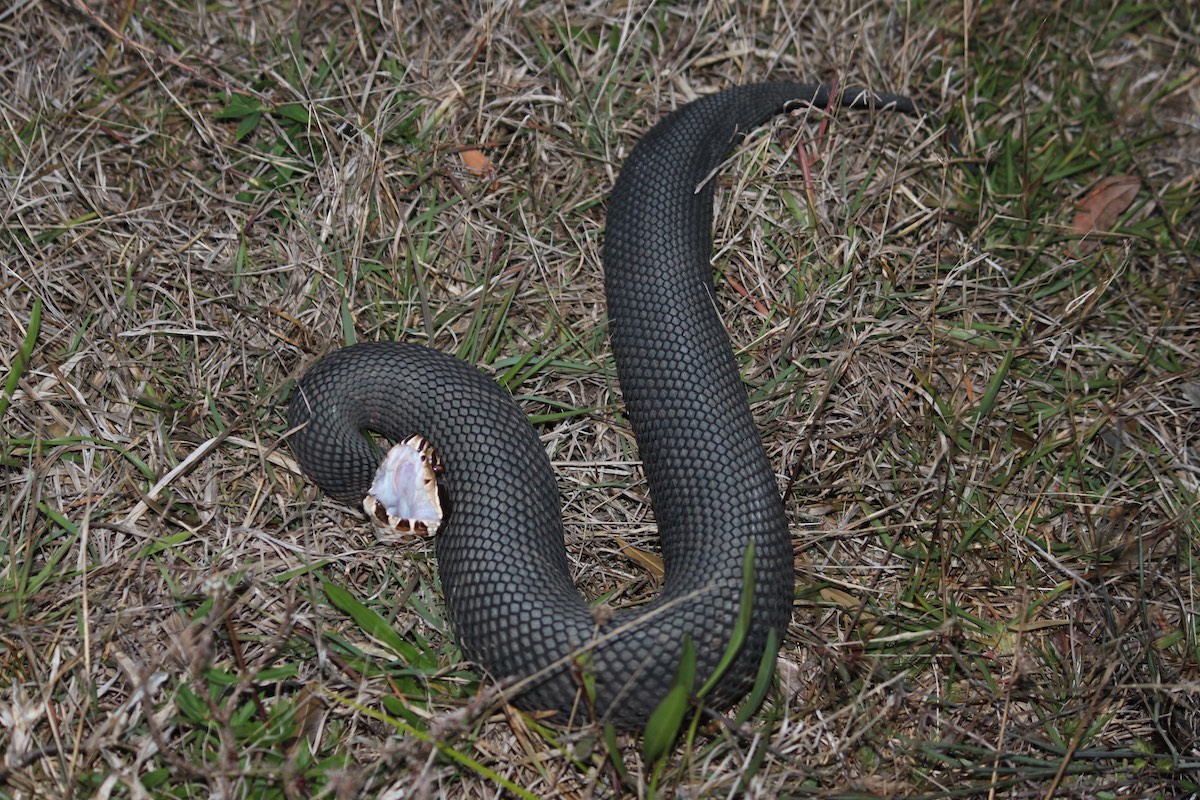Uptight Snakes More Likely to Strike

Stressed-out snakes are more likely to strike, new research finds. But it's not the stress of being captured or handled that makes them bite. It's how tense they are in the first place.
Think of snakes as office drones: The guy down the hall who is always tightly wound is more likely to snap at you for misloading the printer than the chill woman in the cubicle next door, no matter what else is going on in that moment.
"Most people think a snake is more likely to strike after you have handled or harassed it," study leader Tracy Langkilde, a professor of biology at Penn State University, said in a statement. "Our results show this is not true. We show that how stressed a snake gets when handled or harassed does not determine how likely it is to strike." [The World's 6 Deadliest Snakes]
Handling cottonmouths
Langkilde, along with Penn State undergraduate Mark Herr and their colleagues, captured 32 wild cottonmouths from marshes and swamps. Cottonmouths (Agkistrodon piscivorus), also known as water moccasins, are pit vipers found in the southeastern United States. The researchers were interested in connecting the snakes' stress levels to their behavior. [Video: Watch Scientists Capture Cottonmouth Snakes]
This blood was tested for corticosterone, a hormone that spikes in the bloodstream during stress. After the first blood draw, the snakes were put in a 5-gallon bucket for 30 minutes, a stressful situation for them, and then subjected to a second blood draw for a second corticosterone test. During the second round of handling, seven of 32 snakes tried to strike.
Stress and strikes
The researchers found that the higher the cottonmouth's level of corticosterone in the first blood draw, the more likely it was to try to strike during handling by a human. However, the spike in corticosterone that occurred due to confinement didn't affect the snake's likelihood of striking. In other words, it appears that the snake's background level of stress, not a single trying incident, determines its defensive behavior, the researchers reported in November in the journal General and Comparative Endocrinology.
The study can't prove that the elevated background corticosterone causes the defensive behavior, the researchers wrote, but it is suggestive of a relationship between the two. The researchers plan to conduct more controlled experiments to confirm causality.
Get the world’s most fascinating discoveries delivered straight to your inbox.
However, they wrote, if snakes are in environments that cause higher baseline stress, like habitats stressed by human development, they might become more defensive. That could theoretically create more risk for snakebites, but might also be bad for the cottonmouths if it causes them to expend more energy on defense, the researchers wrote.
Original article on Live Science.

Stephanie Pappas is a contributing writer for Live Science, covering topics ranging from geoscience to archaeology to the human brain and behavior. She was previously a senior writer for Live Science but is now a freelancer based in Denver, Colorado, and regularly contributes to Scientific American and The Monitor, the monthly magazine of the American Psychological Association. Stephanie received a bachelor's degree in psychology from the University of South Carolina and a graduate certificate in science communication from the University of California, Santa Cruz.


